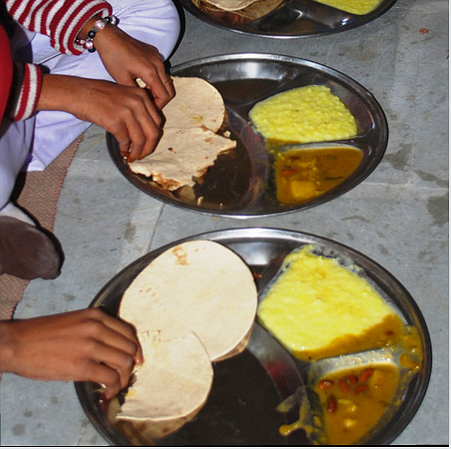It’s the National Nutrition Week in India.
- 42.5% of children under five years of age are underweight in India: UNICEF
- Africa comes second in terms of proportion of malnourished children with an average of 21% :UNICEF
- 19 states have taken out eggs from the menu of the mid-day meal scheme.
- 1 egg has 17gm protein, in comparison to milk (6 gm)and bananas (1gm)
More than 40% children in the country are severely malnourished. Yet malnourishment comes under the spotlight only when there is a large-scale tragedy; it’s never recognised as a tragedy in itself.
Indian children are the most malnourished in the world. Our malnourishment rates are worse than most African countries, Afghanistan and even Pakistan. Still, the flagship programme of the government, the mid-day meal (MDM) scheme, started in 1995 to boost attendance, feeds 10 crore school going children (of class 1 to 8th).
However, the programme is also a way of institutionalising vegetarianism. 19 out of the 28 states do not even serve eggs to children who badly need a dose of nutrients. But the question really is, why has the menu for MDM in the last 20 years remained strictly vegetarian?
Why Eggs Need To Be on the Mid-day Meal Menu

India has around 195 million undernourished people, the highest number in the world; up by 2.6% in the last five years. More than 65 million children are stunted, especially those from dalit, tribal and below the poverty line families. The government spends crores to tackle this, with sketchy results.
The findings on egg are loud and clear: eggs are the ideal protein to fight undernourishment. Protein builds muscle, increases height and balances hormones in growing children. Just look at the chart below which compares the nutritive content of eggs and vegetarian options at a similar cost:

The quality of the protein is measured by biological value (BV), the percentage that can be absorbed by the body. Pulses have 60 BV and cereals between 60 and 70. Egg protein has 100 BV. Now the amino-acid make-up of eggs is similar to that of human tissues, so egg are nearly 100% absorbable, especially in children who eat small quantities of food.
A big criticism of eggs is that they have more fat than fibre. But these are good fats, and growing children need calories to increase their weight, facilitate the absorption of other nutrients and for brain development as well.
For those who argue that vegetarians get proteins from the same source as elephants and rhinos - from plants, are mistaken. Though soya chunks, tofu, large quantities of milk can match the protein requirements of an egg, there are none where all nutrients, (vitamin A, iron, calcium and fat) are available from a single source. And really, tofus and soya are supermarket delicacies which the shoe-string anganwadi budget cannot afford.

The verdict on the benefits of eggs is clear. In each case, the story is the same – the caste and the class of the decision-making leaders, often dictates the nutritional intake of a poor child. Surely, vegetarianism is about abstaining from certain food products, not about enforcing abstention on others?
Why the Government Must Keep Investing in Mid-Day Meals

Two years back, 23 children in Bihar died after eating a mid-day meal that was provided by their school. Nearly as many were in a critical condition and hospitalised. Tests revealed adulterated cooking oil and presence of pesticides in the cooked meal.
This wasn’t the first disaster to plague the mid-day meals. A hot, well cooked nutritous meal was meant to be the charm to persuade poor famillies to send their children to school but the Bihar tragedy left many famillies questioning the point of such a scheme.
The episode highlights the pitfalls that any programme of this size in a country rife with corruption have. In 2006, a UP based NGO was siphoning off truckloads of rice meant for mid-day meals, in collusion with government officials. UP and Bihar have the worst malnutrition rates in the whole country.

Barring these horrific episodes, the scheme has been providing 450 calories and 12 grams of proteins to primary school children from the last two decades. In a lot of centres, children are also given iron and folic acid supplements. Addressing micronutrient deficiencies through the mid-day meals is an essential investment not only in improving nutrition but also for welfare, human rights and economic development.
But the stark gap in the nutritional in hygiene and nutritional value of every meal needs to be addressed to enhance the impact of this investment.
Also Read:
(At The Quint, we are answerable only to our audience. Play an active role in shaping our journalism by becoming a member. Because the truth is worth it.)
.jpeg?auto=format%2Ccompress&fmt=webp&width=720)